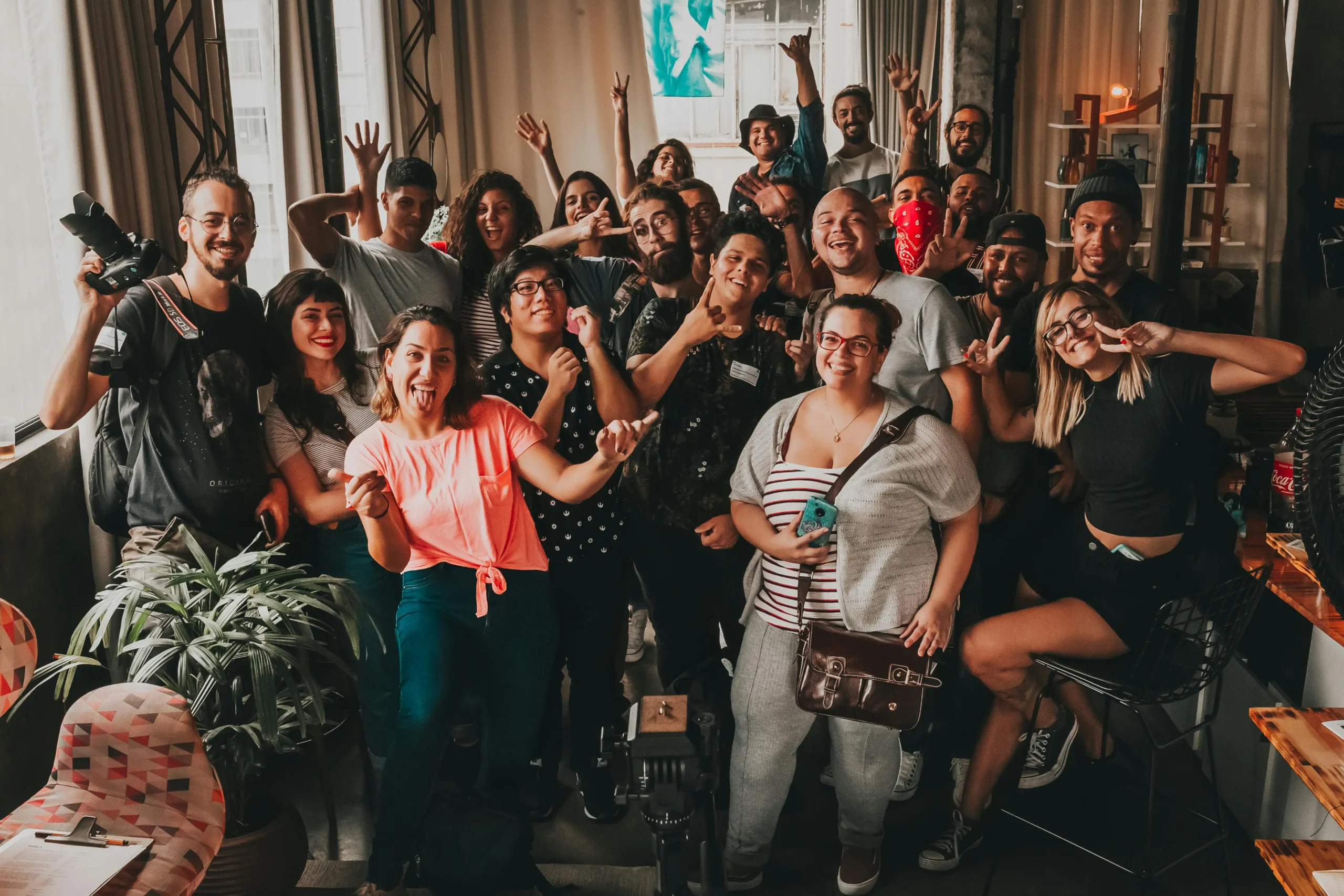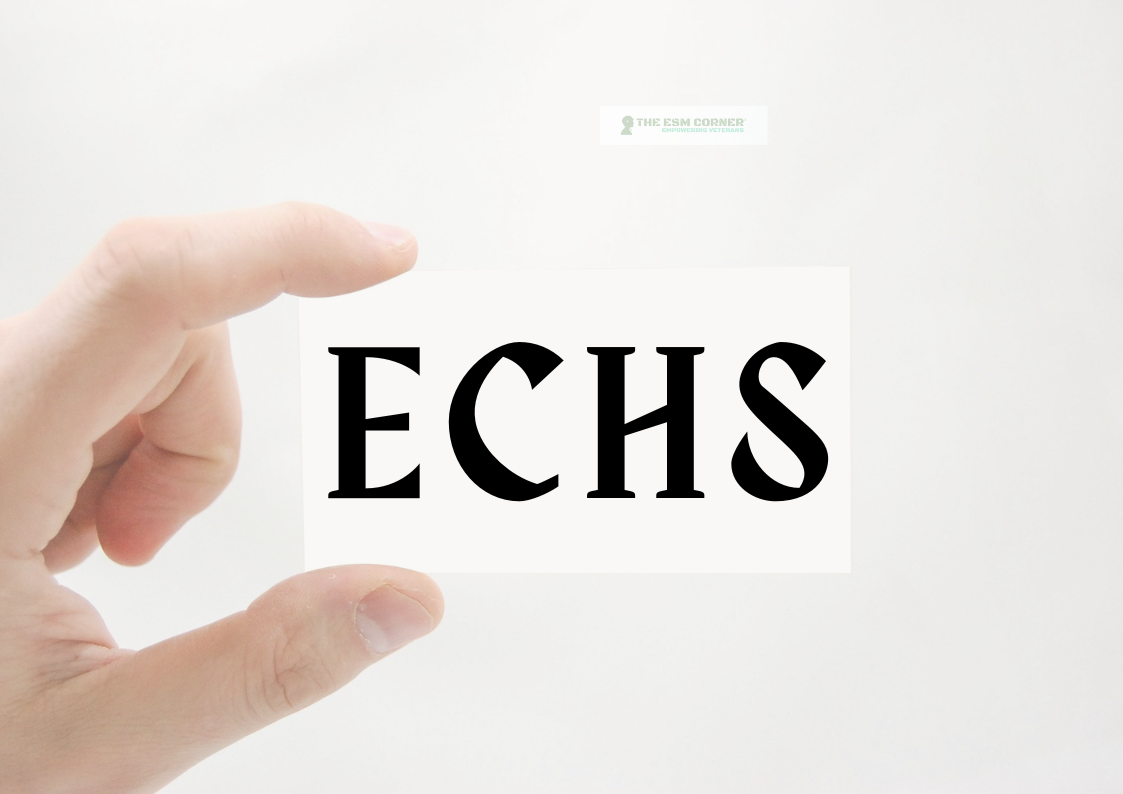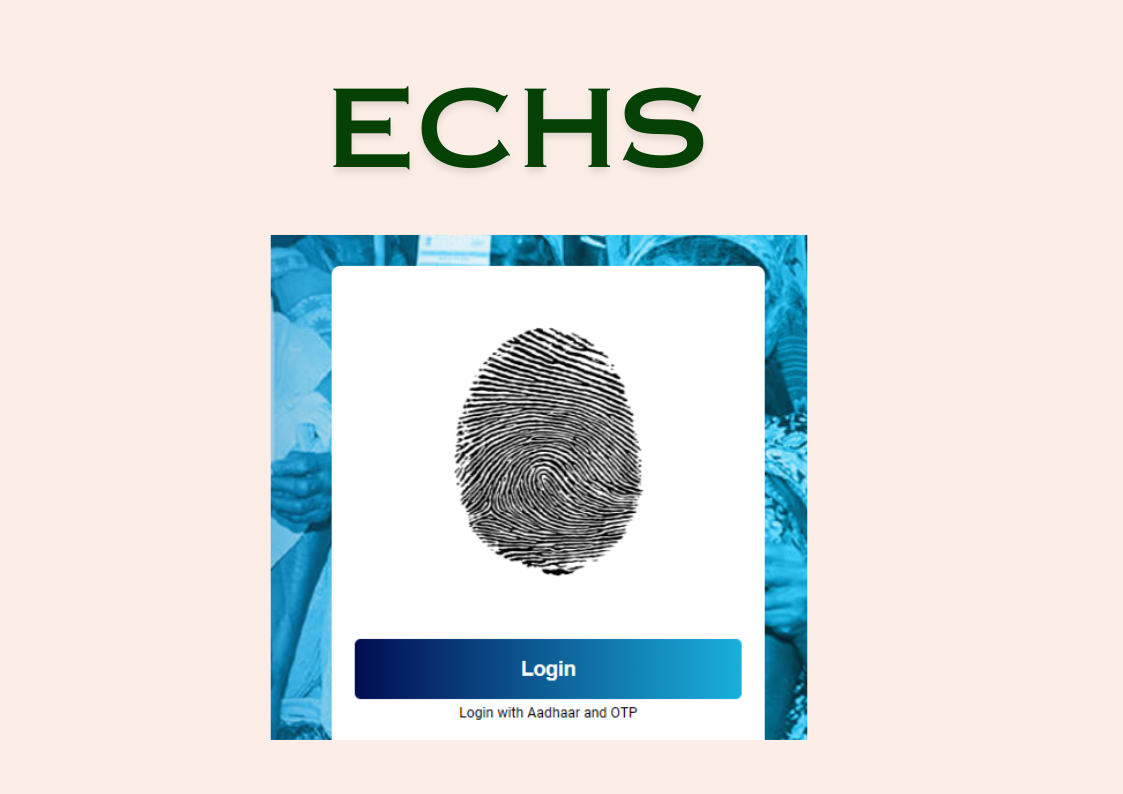
Finally, the day is here…Congratulations on bidding adieu to the most prestigious organization in India! You’ve served an institution that has provided you with everything—from wealth, fame and to a standard of living. The force always cares for you, both during your service and after retirement, setting you apart from others. Show gratitude towards the organization for everything it has given to you, and will continue to provide throughout your life.
After you retire from your job, there’s a whole new chapter that awaits you. This part is about stepping into a fresh phase of life and figuring out things like finding a new job, making friends in your community, understanding civil societies, taking care of legal problems, and making your social life joyous and lively. It’s like a guide that walks with you every step of the way, making your retirement journey smooth and easy. This guide gives you practical tips to smooth the transition into the next exciting part of your life.
As you embark on life after retirement, it’s important to consider your future direction. This guide serves as a companion in exploring new passions or embarking on a different career path, ensuring you remain active and fulfilled. Like having a chat with a friend about navigating post-work life.
Moreover, it’s about embracing the adventure of meeting new people and adapting to diverse lifestyles. Imagine forming new friendships and discovering the vibrant activities around you. This guide acts as your personal navigator, helping you integrate into this exciting new chapter of life with ease and enjoyment. It’s a support system, dedicated to enriching your days post-retirement.
“Now it’s the moment to put into action all the plans you’ve been crafting over the past year.”
A MEMORABLE RETIREMENT CELEBRATION: THE FIRST STEP TO CIVILIAN LIFE

1. Embracing Retirement: A Joyful Transition
Retirement involves organizing a thoughtful celebration, marking the beginning of a new and satisfying phase of life beyond work. This event, which includes colleagues, friends, and family, creates a feeling of togetherness and support, highlighting the importance of both work and personal relationships. Reconnecting with former colleagues and friends not only strengthens the bonds formed over the years but also offers valuable insights into the retiree’s professional and personal journey.
2 Retirement Celebration: The Inaugural Step to Social Adjustment
It’s a platform to share memories, show gratitude, and collectively appreciate the retiree’s accomplishments. Encouraging a nostalgic atmosphere reinforces the retiree’s positive legacy and the relationships built during their professional years. Moreover, this celebration becomes an informal yet insightful space for learning about the adjustment to retired life, as retirees can gather advice and perspectives from those who have successfully navigated a similar transition. In summary, planning a retirement celebration is a crucial and memorable first step in embracing a positive and fulfilling retired life.
YOUR IMMEDIATE ACTIONS MUST GO LIKE THIS:
1. Secure Your Retirement Funds:
Consider putting your retirement funds, like your gratuity, leave encashment, lump sum amount, or commutation, into a temporary and safe investment. One option is to start by fixing this amount in multiple or single Short Term Fixed Deposit (FD). This not only ensures that your money is protected from any potential fraud but also provides a decent interest by the time you execute your Investment Strategy.
With the rise in the usage of digital devices, financial fraud is a routine story, bulk credits of retirement benefits may catch the attention of fraudsters and could be a potential hazard for your accumulated wealth. Parking your funds in FD will create a stable foundation for your financial plans in the early days of your retirement.

2. Obtain Your ESM Identity Card for Official Recognition:
Registering yourself at the Zila Sainik Board (ZSB) and Kendriya Sainik Board (KSB) must be at the top of your priority list. Post retirement ZSB is the sole Entity that looks after you in any circumstances. Registration is crucial as it helps you obtain the Ex-Servicemen (ESM) Identity Card for both yourself and your dependents. This special card plays a key role in ensuring your recognition as an ex-serviceman after leaving the uniform. Additionally, it unlocks various benefits for your dependents.
To complete the registration process, you may need documents like a photocopy of your discharge book, Pension Payment Order (PPO), and passport-sized photos and Adhaar of yourself and your dependents. Locate your ZSB, either through a quick Google search or by navigating through our Important Contacts page. Registration at KSB can easily be done online from its official website (https://online.ksb.gov.in/). Veterans can get various grants and benefits only after registering themselves and their dependents on this platform.
Know more about KSB, RSB and ZSB
3. Get yourself registered in the veteran’s cell or Station Headquarters:
Another essential step is to register yourself in the veterans’ cell at the Station Headquarters. This registration is significant as it facilitates the provision of post-retirement benefits for veterans. In some states in India, this registration is mandatory. Through this process, you will obtain your Ex-Servicemen Contributory Health Scheme (ECHS) cards. Additionally, in certain states, Allotment of CSD Canteens and applications for new canteen cards are initiated exclusively from the Station Headquarters. It is important to get registered on any of these platforms to avail the benefits you earn.
4. Activate CSD and Dependent Canteen Facilities:
Move forward by completing the registration at the dependent Canteen Stores Department (CSD). This step is vital for the activation of your CSD grocery and liquor cards, ensuring access to these facilities post-retirement. It’s important to note that various states and districts in India may have different policies for the activation and allotment of canteen facilities to Ex-Servicemen (ESMs). To understand the specific procedures in your area, visit your nearest ESM canteens or Station Headquarters. This registration is a practical and beneficial measure to secure essential services and amenities for you and your dependents during your retirement.
Click here to know more about CSD Facilities.
5. Register yourself in your Nearest ECHS Polyclinic :
Take advantage of the Ex-Servicemen Contributory Health Scheme (ECHS), a crucial healthcare facility for Ex-Servicemen (ESM). after retirement with ECHS, your dependence on military hospitals comes to an end, and you gain coverage under this scheme. The initial step to benefit from this service is to register yourself at the nearest ECHS Polyclinic. If you have received your ECHS cards, bring them along If you don’t have the ECHS card, you may use the registration slip to get a token. The Officer-in-Charge (OIC) of the Polyclinic will authenticate the slip, and it remains valid for six months or until your card is printed. This registration is fundamental for accessing healthcare services under ECHS, contributing to your overall well-being post-retirement.

Click here to learn more about ECHS.
6. Convert your Account to a DSP Pension Account :
The DSP pension account is a special bank account for retired military personnel. If you had a DSP salary account during your service and you’ve retired from the military, it’s important to convert it to a DSP pension account. This is crucial for a few reasons. The DSP pension account offers extra benefits like free personal accident insurance cover of Rs. 30 lakhs and free air accident insurance cover of Rs. 30 lakhs for pensioners. The main reason to convert is that if something unexpected happens and your account is not switched from salary to pension, you won’t get the benefits or insurance coverage.
Click here to learn more about the DSP pension Account.
7. Register with the Directorate General Resettlement (DGR) :
Enrol with the Directorate General Resettlement (DGR) to access resettlement courses and employment assistance after retirement. DGR is committed to provide training, re-employment, and welfare opportunities for ex-servicemen and their dependents. Explore various courses offered by reputable institutes in India to enhance your skills. Use DGR’s platform to apply for job opportunities in both public and private sectors.
8. Apply for any Post Discharge Claim (PDC):
If, despite your best efforts, you encounter any discrepancies or non-adjustments in your funds and claims, you have the option to file a post-discharge claim. To do so, complete the necessary form and submit it along with the supporting documents to the NER group of your Records. This process ensures that your concerns are addressed even after your discharge.
9. Filing of An RTI to get any desired Document:
If, for any reason, you are unable to access any of your documents such as a copy of RMB, claims, or check the status of any grievance or changes in data, you have the option to file a Right to Information (RTI) request. The RTI Act applies to all government offices, allowing you to seek information on various matters pertaining to you. Submitting an RTI request can help you obtain the necessary information or documents that fall within the scope of the RTI Act.
Click here to Learn more on RTI.
10. Seeking Legal help for non-settled issues:
If you have any unresolved issues or pending matters, seeking assistance from the Armed Forces Tribunal (AFT) can be beneficial. AFT handles applications related to disability pension, service pension, and family pension. Furthermore, it addresses various applications for benefits and reliefs associated with service matters, including promotion, seniority, pay, allowances, leave, transfer, and posting. The tribunal also reviews and revises orders, and decisions made by any authority in service matters, and ensures the enforcement of such orders. Seeking help from AFT can provide a resolution to your pending concerns within the realm of service-related issues.
Click here to learn more about Armed Forces Tribunal (AFT).
FINDING FULFILLMENT AFTER RETIREMENT: PURSUING YOUR GOALS
1. Plan Your Future create a roadmap:
As you enter post-retirement life, begin by outlining your short and long-term goals. Consider personal goals, like spending more time with family or exploring a new hobby, professional goals if you plan to work part-time or start a passion project, or coaching for a new job. Also, think about lifestyle goals, such as travelling or making changes to your living arrangements. Setting these goals is like creating a roadmap for a meaningful and balanced retired life.

2. Define Goals Across Personal, Professional, and Lifestyle Dimensions:
Plan different goals for after retirement, including personal growth, work interests, and things you enjoy. Whether it’s learning something new, helping others, travelling, or trying out a business idea, having a mix of goals makes your retirement more interesting. This way, you’ll have a balanced and fulfilling experience in this new phase of life.
3. Pursue Personal Interests and Hobbies:
Actively pursue your personal interests, hobbies, and passions. Use this phase of life to dig into activities that bring you joy and satisfaction. Whether it’s painting, gardening, writing, or learning a musical instrument, embracing personal interests contributes to a rich and rewarding retirement.
4. Embrace Opportunities for Growth:
Embrace new chances to grow and achieve in your personal life. Think about taking classes, going to workshops, or doing activities that challenge and excite your mind. This dedication to always learning and growing enhances your experience after retirement.
5. Maintain a Harmony Between Personal Accomplishments and Leisure:
Strike a balance between working towards personal achievements and enjoying leisure activities. While pursuing meaningful goals is important, make sure to allocate enough time for relaxation and savoring the rewards of your efforts. Finding this balance ensures a well-rounded and enjoyable post-retirement lifestyle, allowing you to experience the best of both productivity and leisure in this new phase of life.
Aligning your goals with different aspects of your life and actively pursuing your interests creates a comprehensive roadmap for your post-retirement journey. This intentional approach ensures not just a routine but a life filled with continuous growth, moments of joy, and a deep sense of satisfaction. As you step into this new chapter, embracing the diverse experiences and opportunities each day brings will undoubtedly contribute to a rich and fulfilling post-retirement life.
MAXIMIZING YOUR RETIREMENT LUMPSUM: SMART INVESTMENT STRATEGIES
Investing your retirement savings wisely is crucial for financial security. Here are some straightforward options suitable for those who have retired:
1. Bank Schemes for Steady Returns:
Consider placing a portion of your retirement lump sum in bank schemes offering steady returns. Fixed deposits, Term Deposits and Senior Citizen Savings Schemes (SCSS) are low-risk options with predictable interest rates. SCSS is specifically designed for individuals aged 60 and above, But veterans who have attained the age of 50 can utilize the benefits of SCSS by producing the certificate issued by the Indian Armed Forces. Explore different term lengths and interest payout frequencies to match your financial goals and income needs.

Click here to learn more about Best Bank Saving Schemes.
2. Post Office Schemes:
Explore various post office savings schemes that offer secure and stable returns. Some popular options include the Senior Citizens Savings Scheme (SCSS), the Monthly Income Scheme (MIS), and the 15-Year Public Provident Fund (PPF). These schemes provide competitive interest rates and tax benefits, making them attractive options for retirees. One of the most adopted saving schemes is POMIS by most of peoples, as the return is good has tax exemptions as well and the return can further be converted to RD to get further returns.
Click here to know more about Best Post Office Schemes.
3. Real Estate Investments for Stability:
Consider investing a part of your retirement money in real estate for stability. You can buy properties that you can rent out to earn a steady income or choose ones that might increase in value over time. Real estate is like having something real that can help protect your money from losing value over time, and it makes your investment options more varied. Make sure to do good research before buying and picking properties in areas that are likely to grow in the future. This way, you’re making a smart move to make your retirement money more secure and diverse.
4. Government and Corporate Bonds for Stability:
To keep your investments stable, consider adding government and corporate bonds to your portfolio. Bonds offer stability and pay regular interest. Government bonds like National Savings Certificates (NSC), Public Provident Fund (PPF), and Senior Citizens Savings Scheme (SCSS) are low-risk options. On the other hand, corporate bonds can give you higher returns with a bit more risk. When deciding how much of each to invest in, think about how much risk you’re comfortable with and how long you plan to keep your money invested. This way, you can create a balanced mix of government and corporate bonds that suits your financial goals and preferences.
5. Diversify with Life Insurance:
Explore life insurance options that not only protect your finances but also provide investment benefits. Unit-linked insurance plans (ULIPs) are one such option, combining life coverage with returns linked to the market, allowing you to participate in potential market growth. Evaluate different policies based on your comfort with risk and long-term financial goals. Additionally, you can consider traditional life insurance policies with guaranteed returns for added stability.
6. Mutual Funds for Market Exposure:
When seeking exposure to the stock market without managing individual stocks, mutual funds offer a diversified approach. Choose well-managed equity funds based on your risk tolerance. Systematic Investment Plans (SIPs) enable you to invest regularly, taking advantage of rupee-cost averaging, which can potentially reduce the impact of market volatility. Consider these options carefully to align with your financial objectives and risk preferences.
Before deciding on investments, carefully evaluate your financial goals, risk tolerance, and how long you plan to invest. Diversifying across different types of investments helps create a balanced and resilient portfolio for your post-retirement life. Consulting a financial advisor is recommended for personalized guidance based on your unique needs and circumstances.
LIFELONG LEARNING IN POST-RETIREMENT: EDUCATION AND SKILL ENHANCEMENT
1. Embrace Lifelong Learning:
Keep a mindset of lifelong learning, even in retirement. Stay curious and open to gaining new knowledge and skills. Embracing ongoing education enriches your life and keeps your mind engaged with the world around you. Remember, staying updated with the latest trends and changing technology is crucial for survival in today’s society.

2. Stay Updated on Industry Trends:
Stay informed about industry trends and advancements, especially if your post-retirement goals involve staying connected to your previous field or exploring new professional ventures. This knowledge ensures that your skills remain relevant in a rapidly evolving world.
3. Seek Opportunities for Development:
Actively seek opportunities for personal and professional development. Identify areas where you can enhance your skills or acquire new ones. Attend workshops, webinars, or seminars that align with your interests and post-retirement goals.
4. Explore Certifications and Courses:
Explore certifications, workshops, or courses that align with your post-retirement objectives. Whether it’s gaining a new qualification or refining existing skills, targeted education contributes to your personal and professional growth. This proactive approach enhances your expertise and versatility.
5. Identify Avenues for Growth:
Discover ways to grow personally and professionally. Think about how you can develop your skills and interests during retirement. You might want to pick up a new hobby, delve into artistic activities, or start your own venture. The important thing is to keep pushing your limits and learning new things.
Keep learning, stay informed about the latest in your field, look for growth opportunities, consider taking up courses or certifications, and find paths for ongoing personal and professional development. This way, your life after retirement will be active, rewarding, and in tune with your changing passions and goals.
SPICING UP RETIREMENT: DIVE INTO COMMUNITY VIBES!
1. Volunteer for Community Service:
Create an impact in society by engaging in community service. Invest your time and skills in causes aligned with your values, fostering a sense of purpose and strengthening connections. Join volunteer activities, whether aiding local charities, mentoring, or contributing to community projects. Your involvement makes a positive impact, turning community engagement into a fulfilling aspect of your post-retirement journey. It’s a chance to give back, make a meaningful difference, and stay connected with the world around you.

2. Join Veterans’ Organizations:
Connect with veterans’ organizations that resonate with your experiences and values. These groups provide a platform to stay in touch with fellow veterans, collaborate on meaningful causes, and build camaraderie. Being part of such organizations fosters a sense of shared purpose, creating a supportive community for veterans. Stay closely connected with the military community to receive and offer support. Attend events, reunions, and gatherings that offer opportunities for camaraderie. This connection ensures a network of understanding and encouragement from those who share similar experiences, fostering a sense of belonging and solidarity in your post-retirement life.
Click here to learn about the Veterans Organisation of India
By actively volunteering for community service, joining veterans’ organizations, staying connected with the military community, and engaging in supportive activities, you contribute to the well-being of both yourself and others. Community engagement becomes a foundation stone of a purposeful and interconnected post-retirement life.
MAINTAINING FINANCIAL WELLNESS IN POST-RETIREMENT: A STRATEGIC REVIEW

1. Regular Financial Plan Review:
To stay financially well in post-retirement, adopt a strategic and proactive approach. Review your financial plans regularly. Assess your budgets and investments, and make required adjustments based on real expenses and changing circumstances. It is important to have a flexible approach towards unexpected expenses or changes in income after retirement. This will empower you to make informed and adaptive decisions to implement your financial vision.
2. Periodic Consultation with a Financial Advisor:
Regular consultations with a financial advisor for expert guidance are noteworthy. These meetings will provide a routine approach for investments, tax planning, and overall financial health. A well-managed investment strategy, tailored to your risk tolerance and financial goals, is essential for long-term stability. These sessions are crucial for comprehensive financial health checks, covering not just investments but also areas like insurance, Real estate planning, and specific financial concerns. This ensures your financial well-being is actively safeguarded.
This strategic approach empowers you to navigate changing circumstances and enjoy a secure and fulfilling retired life.
MAINTAINING LEGAL CLARITY IN POST-RETIREMENT: A DOCUMENTATION GUIDE

1. Review and Update Nominations and Beneficiaries:
Ensure you review and update nominations and beneficiary designations from time to time for insurance policies, retirement accounts, and other financial assets. Confirm that your nominations align with your current intentions to facilitate a smooth transition of assets in case of unforeseen circumstances.
2. Organization of Important Paperwork:
Keep all crucial paperwork well-organized and easily accessible. This includes legal documents, service-related paperwork, and other critical records. As earlier stated in this guide keep copies of all necessary documents in the digital locker as well as Google Drive for timely availability. Also Maintaining an organized system simplifies retrieval when needed, contributing to an efficient and stress-free post-retirement life.
By regularly reviewing and updating legal documents, organizing important paperwork, and ensuring that wills, nominations, and power of attorney documents accurately reflect your current wishes, you establish a strong foundation for legal clarity and peace of mind in your post-retirement years.
STRENGTHENING FAMILY TIES IN POST-RETIREMENT: A COMMUNICATION AND ADAPTATION GUIDE

1. Maintain Open Communication with Family Members:
Foster a culture of open communication within your family. Regularly discuss post-retirement plans, aspirations, and expectations. Ensure that everyone is on the same page and has the opportunity to express their thoughts and concerns.
2. Discuss and Adjust Plans as Needed:
Stay flexible and be willing to adapt your post-retirement plans based on evolving family needs and circumstances. Life is dynamic, and priorities may shift. Regularly revisit your plans, taking into account the changing aspirations and requirements of your family members. A collaborative approach ensures that everyone’s needs are considered.
3. Consider Family Aspirations:
When planning and adjusting post-retirement activities, consider the aspirations of your family members. Whether it’s travel plans, lifestyle choices, or financial decisions, acknowledging and incorporating the dreams and goals of your family fosters a supportive and harmonious environment.
4. Prioritize Quality Time:
Emphasize the importance of spending quality time with family. Whether through planned activities, gatherings, or shared experiences, dedicating time to nurture family bonds contributes to a fulfilling post-retirement life. Keeping a balance between personal pursuits and family engagement is Important.
5 Celebrate Milestones Together:
Make an effort to celebrate family milestones and achievements. Whether it’s birthdays, anniversaries, or personal accomplishments, acknowledging and commemorating these moments reinforces a sense of unity and shared joy within the family.
By maintaining open communication, drafting plans based on family needs, prioritizing quality time, and celebrating milestones together, you create a supportive and harmonious family environment in the post-retirement phase. This collaborative approach ensures that your retirement journey aligns with the collective well-being and aspirations of your loved ones.
MAINTAINING VITALITY IN POST-RETIREMENT: A HEALTH AND WELLNESS GUIDE

1. Prioritize Health and Wellness Activities:
Make your health a top priority in post-retirement life. Engage in regular physical activities, whether it’s walking, swimming, or participating in fitness classes. Prioritize a balanced diet that includes a variety of nutrients, and adopt a healthy lifestyle to enhance your overall well-being.
2. Stay Informed about Healthcare Benefits:
Understand and stay informed about post-retirement healthcare benefits. Familiarize yourself with the coverage provided and how to effectively utilize healthcare services. Being well-informed ensures, you can access the necessary care for preventive measures and overall health.
3. Utilize Healthcare Services Effectively:
Make optimal use of healthcare services for preventive care and well-being. This includes regular health check-ups, screenings, and vaccinations. Proactive engagement with healthcare services contributes to early detection and effective management of potential health issues.
4. Prioritize Regular Health Check-ups:
Schedule and prioritize regular health check-ups and screenings. Routine check-ups are crucial for preventive healthcare, allowing for the early detection of any health concerns. Establishing a consistent healthcare routine contributes to long-term well-being.
How to keep yourself healthy after retirement.

1. Engage in Mental Well-being Activities:
Continue participating in activities that promote mental well-being. This could include hobbies, reading, meditation, or any other pursuits that bring joy and relaxation. Prioritize activities that contribute positively to your mental health.
2. Seek Support for Emotional Challenges:
If facing emotional challenges, don’t hesitate to seek support. Whether from friends, family, or professionals, reaching out when needed is a crucial aspect of maintaining emotional well-being. Acknowledge and address any concerns to ensure a healthy and balanced retirement experience.
3. Stay Socially Connected:
Cultivate and maintain social connections with friends and family. Engage in activities that promote community and support. Social interactions contribute significantly to emotional well-being and help combat feelings of isolation that can sometimes accompany retirement.
4. Consider Joining Community Groups:
Explore opportunities to join community groups or organizations. Contribute to causes that align with your interests. Being part of a community fosters a sense of purpose, provides opportunities for engagement, and ensures that you remain connected with the broader world.
5. Embrace Flexibility in Retirement Planning:
Recognize that flexibility is key in retirement planning. Regularly reassess your plan and be open to adjustments based on changing circumstances, economic conditions, and personal goals. Seeking advice from professionals and staying connected with support networks contribute to a successful retirement transition.
Conclusion
The transition into post-retirement life must be inspiring and full of optimism. We must see retirement not as an end, but as the beginning of a new chapter with endless possibilities for personal growth and happiness. Embracing this phase with flexibility, adaptation, and a commitment to ongoing learning is indeed the key to a fulfilling and joyful retirement. If you ever seek advice, resources, or just a conversation about this journey, feel free to reach out. Wishing you a wonderful and rewarding retirement adventure






